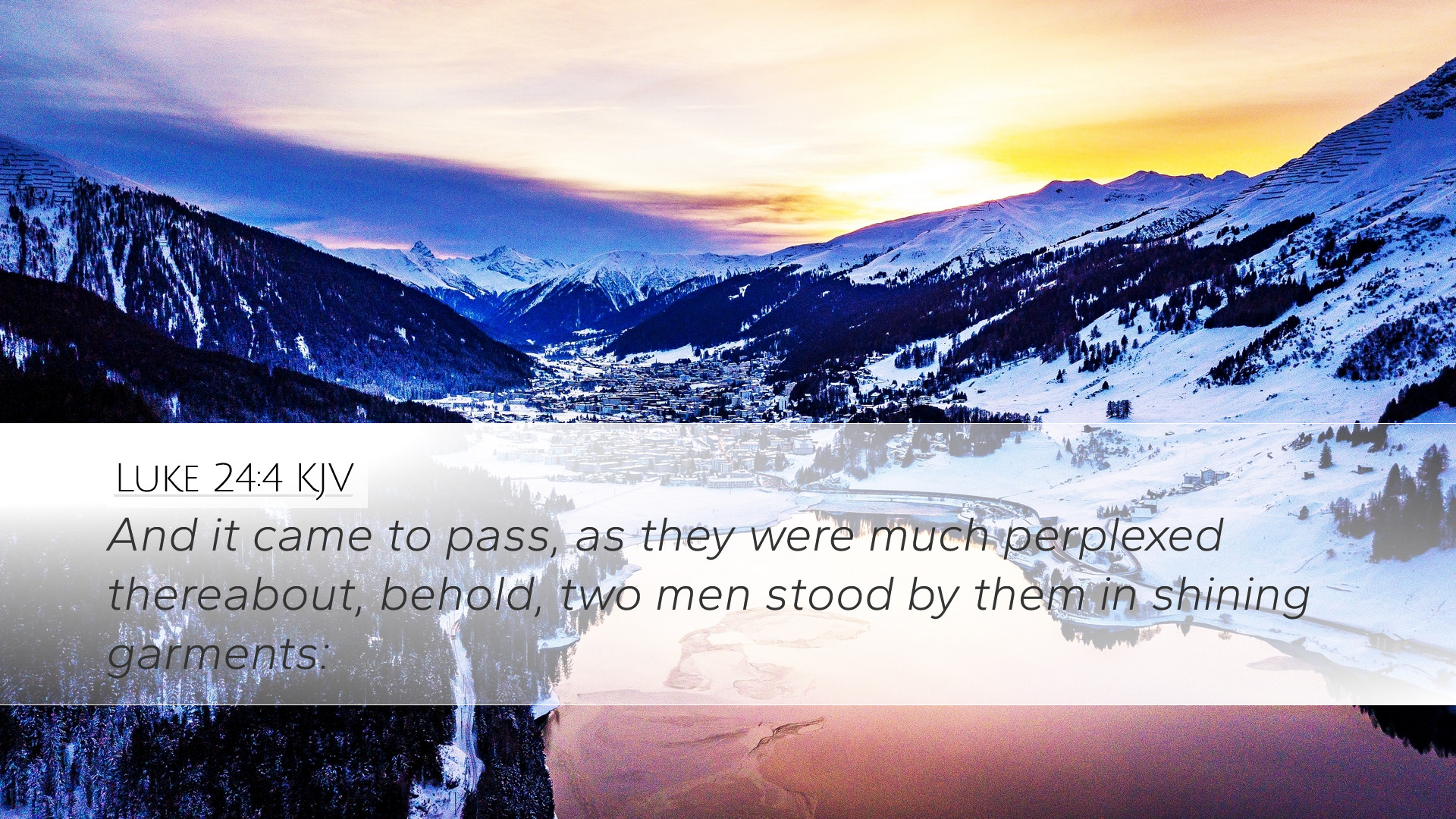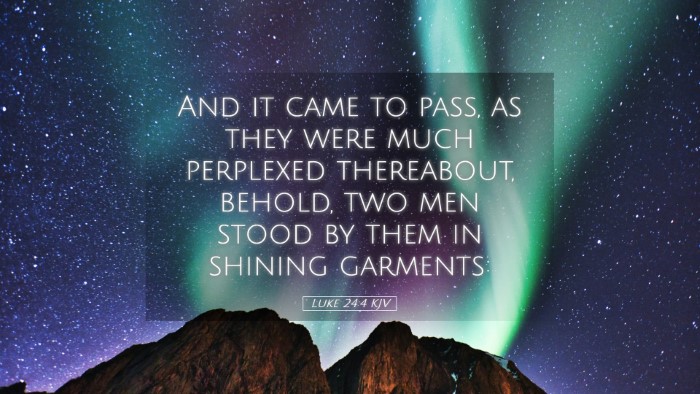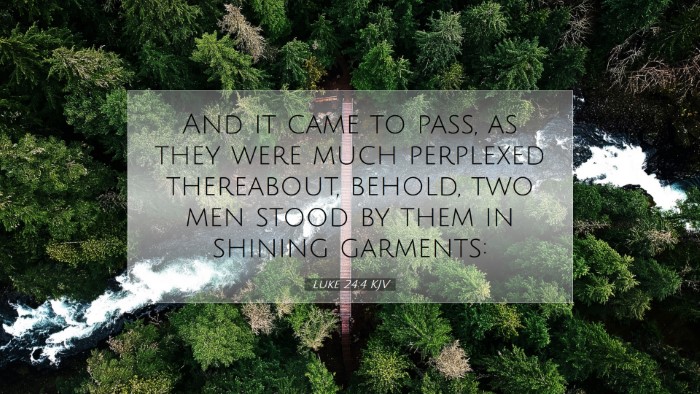Commentary on Luke 24:4
Luke 24:4 states: "And it came to pass, as they were much perplexed thereabout, behold, two men stood by them in shining garments." This verse is situated within the larger context of the resurrection narrative, where the women visited the tomb and encountered a divine revelation that transformed their understanding of the events surrounding Jesus' death and resurrection.
Contextual Overview
The events depicted in Luke 24 occur shortly after the crucifixion of Jesus. The women, having come to anoint His body, discover that the stone has been rolled away from the tomb. Their initial perplexity highlights the emotional and spiritual turmoil they experience—a poignant reminder of the sorrow and confusion that often accompany moments of divine intervention.
Insights from Commentators
-
Matthew Henry:
Henry emphasizes the perplexity of the women as indicative of their shock and disbelief regarding Jesus's resurrection. He notes that their astonishment reflects a deep-seated confusion typical of humanity when confronted with divine realities. The mention of "two men" suggests the presence of heavenly beings, symbolizing the importance of the message they bear—the message of the resurrection. The "shining garments" serve as a visual representation of the divine glory and the heavenly nature of their mission.
-
Albert Barnes:
Barnes elaborates on the heavenly visitors and their role as messengers. He highlights that their appearance in "shining garments" signifies purity and divinity. The perplexity of the women indicates their struggle to comprehend the resurrection. Barnes underscores that the encounter with these angelic beings serves as a pivotal point for the women, prompting a transition from despair to hope as they begin to understand the significance of Jesus's resurrection.
-
Adam Clarke:
Clarke focuses on the emotional state of the women, addressing their confusion and fear. He points out that their initial feelings are natural, given the circumstances of the previous events—the passion and crucifixion. The two men, regarded as angels, are seen as divine reassurance to the women, who become the first witnesses to the resurrection. Clarke also highlights the social and theological implications of women being chosen to receive this heavenly message first, emphasizing their vital role in the early Christian community.
Theological Implications
Luke 24:4 presents several theological themes significant for pastors, students, and theologians:
-
The Perplexity of Faith:
The women’s distress emphasizes a common human experience when facing the mysteries of faith. Their confusion reflects the struggle that believers often encounter when grappling with the implications of Christ's resurrection.
-
The Role of Angels:
The presence of the two men illustrates God's active involvement in human affairs, especially in moments of critical revelation. Angels serve as messengers of God's truth, guiding the faithful toward understanding and hope.
-
Women in the Redemptive Narrative:
The angels' message to the women highlights the inclusive nature of the Gospel. Women play a crucial role in the resurrection narrative, symbolizing the breaking down of societal barriers in the early Church.
-
Hope and Resurrection:
This verse foreshadows the hope and transformative power inherent in the resurrection. The shift from perplexity to understanding signifies a pivotal moment that would define the faith journey for many early disciples.
Conclusion
In considering Luke 24:4 within the broader framework of New Testament theology, scholars can appreciate its rich layers of meaning. This pivotal verse serves as a reminder that divine interventions often provoke initial confusion but ultimately lead to profound understanding and hope. Pastors and theologians are encouraged to draw upon these insights when preaching or teaching on the resurrection, underscoring the miraculous and transformative nature of Christ's victory over death.


